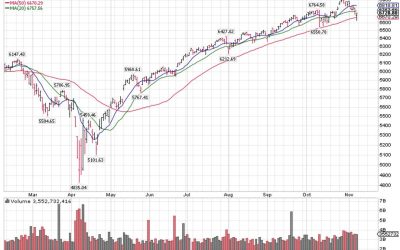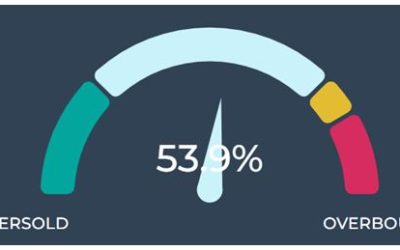July 15, 2025
This morning, I turn 80 – that seems amazing, it happened so fast – so let me claim an old geezer’s prerogative to share 10 investment (and life) lessons from my first 80 circumnavigations of Old Sol:
Lesson #1 (1945): Doomsday Never Arrived – So:
Invest as If Mankind Will Keep Growing in Prosperity
I was born early on July 15, 1945, the day before J. Robert Oppenheimer and his friends set off the first nuclear blast in Alamagordo, New Mexico. That atomic power was soon loosed on Japan, ending World War II, but atomic weapons have not been used in war since then, despite the constant warnings of books, novels and Nuclear Scientists, who have kept their doomsday clock at a few minutes before midnight for almost 80 years. In fact, their Doomsday Clock is now just 89 seconds (down from 90 seconds last year), the closest it has ever been to midnight, representing their ongoing fears of a terrible global catastrophe.
On July 16, 1945, President Harry S. Truman was in Potsdam, Germany, when the bomb exploded. To code that event, the President’s coders told him, “Baby Boy Born. Eyes Bright. Can hear him (from 50 miles) and see him (200 miles away).” So, President Truman was informed of the blast – and my birth!
On the day the bomb exploded, Oppenheimer was a bear, and the New York Times reporter was a bull:
“I am become death, the shatterer of worlds.” — J. Robert Oppenheimer, the bomb’s chief architect.
“I feel privileged to…be present at the moment of the Creation when the Lord said: Let there be Light.”
— William L. Laurence of the New York Times, on seeing that blinding explosion.
So, lesson #1 is that the predicted doomsday never happened and overly fearful bears lost out due to fears, even as America began to expand on a 20-year postwar boom, when businesses and markets flourished.
Here’s a case in point: On July 25, 1945, industrialists Henry J. Kaiser and Joseph Frazer announced their plans to form a corporation to manufacture cars. They had to be insane. By 1945, there were only four major carmakers left standing, but Kaiser was a major industrialist who had helped arm America in World War II, so if anyone could break the Detroit cartel, Kaiser could. By 1945, he sat atop an empire of shipbuilding, cement, steel, and other basic building businesses, from which he had earned a fortune.
With Kaiser’s capital and Frazer’s car knowledge and contacts, they were optimistic about their new firm’s chances. But, even with all that money and expertise, skeptics said they only had “one white chip” in Detroit’s poker game. But by 1947, they produced 100,000 cars and netted $19 million profits. Success was within their grasp, and the next year they made $10 million profits, but Kaiser-Frazer couldn’t afford to come up with new models every year – and consumers demanded novelty. In 1949, Kaiser-Frazer lost $30 million. Frazer left the team. But Kaiser kept going until 1953, when he sold out to Willys-Overland.
This extended history is a tribute to the memory of our first two family cars – a “Henry J” and a “Kaiser.” Dad was an engineer and he loved well-engineered products, so he bought a “Henry J” and then a Kaiser.
Lesson #2 (1950s): Keep Reading Widely, Especially History (and Finance)
Several events happened in July 1955, besides turning 10. On July 9, Bill Haley and the Comets soared to #1 on the hit parade (for seven weeks) with “Rock Around the Clock,” the rock era’s H-bomb event – but I preferred big band jazz and Sinatra. A week later, Anaheim’s Disneyland opened for the first time. “The Happiest Place on Earth” greeted four million that first year, in Fantasyland, Frontierland, Fantasyland and Tomorrowland. Opening day featured Walt Disney, Art Linkletter and…Ronald Reagan. Mom took my older sister to Disneyland (from Seattle) for her 12th birthday. The world was opening for to us kids.
That summer, my parents bought a complete set of the World Book encyclopedias, and I don’t think I emerged from reading or scanning every article within a year or two, reproducing the economic charts as school projects and virtually memorizing all the key production statistics for crops and natural resources.
I quickly graduated to devouring TIME Magazine, cover-to-cover each week, and dad’s college physics textbooks, anything with print. Since then – each year since at least the 1960s – I have read at least 100 books a year, focusing on history and economics as proof of how we overcome crises and keep growing.
Lesson #3 (1960s): Start Investing in Your Salad Days – By Cutting Costs to the Bone
In July 1965, the erosion of our currency began, launching six decades of inflation. With a powerful 68% majority in both Houses of Congress in the 1964 election, LBJ could do whatever he wanted – and did. One early act was the Coinage Act of 1965, signed into law on July 23, 1965, by LBJ. After all, it was his idea – to remove most of the silver from our coins in order to fund “Guns, Butter, Rockets, and More!” Of course, silver dimes and quarters disappeared into personal hoards, while the cheap substitutes circulated.
In the mid-1960s, I worked my way through college, as did my wife-to-be, and we paid off our college debts within a year of graduation. It can still be done. We have helped explain the process to our children and grand-kids, and our two eldest grandsons have already graduated debt-free, in 2018 and 2019. One key is to stay at home the first two years, attending classes at extension campuses or junior college, then do so well you earn scholarships for the last two years in a major college, working and cutting costs to the bone.
Marrying young in 1968, with three kids coming by 1972, we had to be especially cost-cutting in all our needs, finding a $75 rental first, then buying a home in Pasadena for under $20,000, with a $129 monthly mortgage nut. Our big treat was splitting a quart of 29-cent beer each Friday night. We made a game of it.
Lesson #4 (1970s): Don’t “Sell to Soon,” Unless the Numbers Work Out
The 1970s were a rough time to invest and support a family on one salary. The nation was in a blue funk over Vietnam, Watergate, high inflation and more. We even bailed out on moon shots. On July 24, 1975, Apollo 18 returned to Earth, six years to the day after Apollo 11 returned. That was the end of all moon shots, which seemed repetitive and politically expendable, so we’re now 50 years into no moon walks!
At our wedding, Aunt Margie gave us 10 shares of a glamour “Nifty Fifty” stock, and we held it until I finally had to bail out in 1974, near the bottom of a bear market. The stock (after mergers) kept rising, but it went bankrupt in 2023, so I lost a nice ride there, but not nearly as much as when we sold our Pasadena home and cashed in my TIAA-CREF account at USC, worth over $8,000, minus penalties, to assume a low-cost mortgage in Virginia to begin my investment newsletter career with some great publishers there.
At the time, mortgage rates were soaring, rising from 16% when we shopped around, to peak at 18.6%. To buy a home in that market seemed like financial suicide to this penny-pinching economist, so I cashed in my TIAA retirement account and home profits to pay a huge amount (20%+ down, or about $35,000) to assume a mortgage at much lower rates (under 8%), bringing our monthly payments down to $389.
It seemed smart at the time, but if I had been patient, leaving that $8,000 in TIAA-CREF untouched, it would likely approach the 60-fold S&P gains since then, so that $8,000 retirement account, all alone and untouched, could very likely be worth nearly $500,000 today, so it seems I made a mistake cashing out.
Lesson #5 (1980s): The Bears May Roar, but the Bulls Make More Money
In 1980, I began my 45-year career in the investment newsletter business, first by serving as Consulting Editor to Personal Finance in Alexander, Virginia. This gave me a chance to edit the advice of dozens of top professionals in the financial newsletter business. The other two Consulting Editors and I held some informative weekly debates over articles. One, the author of the #1 financial best-seller that year, “Crisis Investing,” argued for a “Greater Depression” ahead, while the other boldly predicted, “Reaganomics Will Work,” turning the market around. For two or more years, the bear seemed right, then the Reagan tax cuts and deregulation turned the bull into the winner. This taught me patience, to weigh the arguments on both sides, but mostly to let the market decide – and it did so, decisively, for the next 15 years and more.
My first investment seminar duties came offshore with four seminars across the Caribbean and Canada in 1981, and I have since moderated panels and served as MC for over 100 seminars, mostly in New Orleans (42), but also in Atlanta (15), Switzerland (14), at Money Shows (15+) around the nation, and on cruises.
The New Orleans speakers were primarily bearish on stocks and bullish on gold, which didn’t work well in the 1980s, and I didn’t make much money then, but I had the good sense to listen to bullish exhibitors (and speakers) in New Orleans – most notably, Louis Navellier and John Dessauer – who helped turn my mind around to think more positively about stocks, while maintaining a small balancing position in gold.
I didn’t wise up fast enough – I missed out on most 1980s gains, but the relentless teachings (and success) of these few bulls turned me around before the end of the decade, and I have been a perma-bull in stocks since 1989. Even though I was late to the game – turning 34 in 1989 – that change made a big difference.
The S&P 500 stood at 318 in mid-1989, when I went to work with a team of bulls (editing Richard Band, Mark Skousen, and later John Dessauer and Louis Navellier), so I missed the big gains in the 1980s, but the S&P is still up nearly 20-fold since 1989 – and some great partnerships helped magnify those gains.
In six of my eight decades on the planet, the S&P more than doubled – and the two slow patches (in the 1970s and 2000s) also delivered net gains, for a total 80-year gain of 423-fold, not counting dividends or inflation, which tend to cancel each other out, over time. Those are the benefits of a bullish outlook.
Oops! I can see this story is already too long, so let me bring you my five post-1990 lessons next week.
(To Be Continued)
The post 7-15-25: 10 Investment Lessons from 60-Years in the Game appeared first on Navellier.











